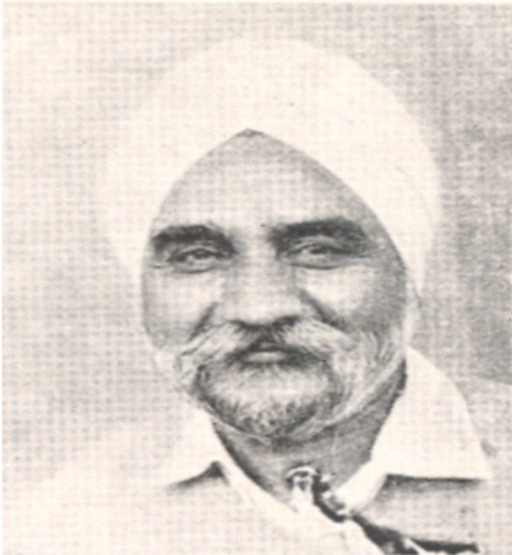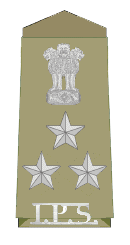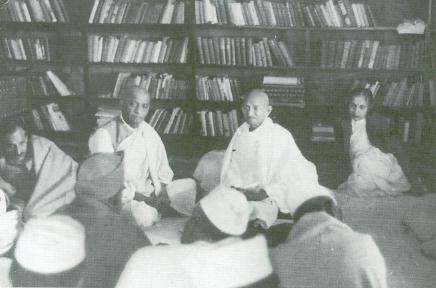|
Darbara Singh
Darbara Singh (10 February 1916 — 10 March 1990) was the Chief Minister of Punjab from 1980 to 1983. Freedom struggle and provincial politics Sardar Darbara Singh (1916–1990), born into the prosperous Jatt zamindar family of Sardar Dalip Singh Johal in Jandiala Manjki, in the Jalandhar district of Punjab. He was educated at Khalsa College, Amritsar and became involved with the freedom movement under the aegis of Indian National Congress, being imprisoned by the British authorities for participation in the Quit India Movement between 1942 and 1945 and again in 1946. In the aftermath of the partition of the country, he was involved in the creation of refugee camps for the displaced people. He started his political career as President of the Jalander Congress Party (1946–1950) and went on to serve as General Secretary, Punjab Pradesh Congress Committee (PPCC, 1953–56) and subsequently served as its president from 1957 to 1964. He served in the Punjab Legislative Ass ... [...More Info...] [...Related Items...] OR: [Wikipedia] [Google] [Baidu] |
List Of Chief Ministers Of Punjab (India)
The Chief Minister of Punjab is the head of the government of Punjab. As per the Constitution of India, the Governor of Punjab is the state's head, but de facto executive authority rests with the chief minister. Following elections to the Punjab Legislative Assembly, the governor usually invites the party (or coalition) with a majority of seats to form the government. The governor appoints the chief minister, whose council of ministers are collectively responsible to the assembly. Given that he has the confidence of the assembly, the chief minister's term is for five years and is subject to no term limits. History Punjab Province (1937-1947) The province of Punjab was then headquartered in Lahore.Under the Government of India Act 1935, a bicameral legislature was set up with a legislative assembly and a legislative council with a government headed by the Prime Minister. The Unionist Party won the Punjab Provincial Assembly elections, 1937 and Sir Sikandar Hayat Khan bec ... [...More Info...] [...Related Items...] OR: [Wikipedia] [Google] [Baidu] |
Zamindar
A zamindar ( Hindustani: Devanagari: , ; Persian: , ) in the Indian subcontinent was an autonomous or semiautonomous ruler of a province. The term itself came into use during the reign of Mughals and later the British had begun using it as a native synonym for “estate”. The term means ''land owner'' in Persian. Typically hereditary, from whom they reserved the right to collect tax on behalf of imperial courts or for military purposes. During the period of British colonial rule in India many wealthy and influential zamindars were bestowed with princely and royal titles such as ''maharaja'' (great king), ''raja/rai'' (king) and ''nawab''. During the Mughal Empire, zamindars belonged to the nobility and formed the ruling class. Emperor Akbar granted them mansabs and their ancestral domains were treated as jagirs. Some zamindars who were Hindu by religion and brahmin or kayastha or kshatriya by caste were converted into Muslims by the Mughals. During the colonial era, the ... [...More Info...] [...Related Items...] OR: [Wikipedia] [Google] [Baidu] |
Punjabi People
The Punjabis ( Punjabi: ; ਪੰਜਾਬੀ ; romanised as Panjābīs), are an Indo-Aryan ethnolinguistic group associated with the Punjab region of the Indian subcontinent, comprising areas of eastern Pakistan and northwestern India. They generally speak Standard Punjabi or various Punjabi dialects on both sides. The ethnonym is derived from the term ''Punjab'' (Five rivers) in Persian to describe the geographic region of the northwestern part of the Indian subcontinent, where five rivers Beas, Chenab, Jhelum, Ravi, and Sutlej merge into the Indus River, in addition of the now-vanished Ghaggar. The coalescence of the various tribes, castes and the inhabitants of the Punjab region into a broader common "Punjabi" identity initiated from the onset of the 18th century CE. Historically, the Punjabi people were a heterogeneous group and were subdivided into a number of clans called '' biradari'' (literally meaning "brotherhood") or ''tribes'', with each person bound to a cl ... [...More Info...] [...Related Items...] OR: [Wikipedia] [Google] [Baidu] |
1990 Deaths
Year 199 ( CXCIX) was a common year starting on Monday (link will display the full calendar) of the Julian calendar. At the time, it was sometimes known as year 952 '' Ab urbe condita''. The denomination 199 for this year has been used since the early medieval period, when the Anno Domini calendar era became the prevalent method in Europe for naming years. Events By place Roman Empire * Mesopotamia is partitioned into two Roman provinces divided by the Euphrates, Mesopotamia and Osroene. * Emperor Septimius Severus lays siege to the city-state Hatra in Central-Mesopotamia, but fails to capture the city despite breaching the walls. * Two new legions, I Parthica and III Parthica, are formed as a permanent garrison. China * Battle of Yijing: Chinese warlord Yuan Shao defeats Gongsun Zan. Korea * Geodeung succeeds Suro of Geumgwan Gaya, as king of the Korean kingdom of Gaya (traditional date). By topic Religion * Pope Zephyrinus succeeds Pope Victor I, as ... [...More Info...] [...Related Items...] OR: [Wikipedia] [Google] [Baidu] |
1916 Births
Events Below, the events of the First World War have the "WWI" prefix. January * January 1 – The British Empire, British Royal Army Medical Corps carries out the first successful blood transfusion, using blood that had been stored and cooled. * January 9 – WWI: Gallipoli Campaign: The last British troops are evacuated from Gallipoli, as the Ottoman Empire prevails over a joint British and French operation to capture Constantinople. * January 10 – WWI: Erzurum Offensive: Russia defeats the Ottoman Empire. * January 12 – The Gilbert and Ellice Islands Colony, part of the British Empire, is established in present-day Tuvalu and Kiribati. * January 13 – WWI: Battle of Wadi (1916), Battle of Wadi: Ottoman Empire forces defeat the British, during the Mesopotamian campaign in modern-day Iraq. * January 29 – WWI: Paris is bombed by German Empire, German zeppelins. * January 31 – WWI: An attack is planned on Verdun, France. February * ... [...More Info...] [...Related Items...] OR: [Wikipedia] [Google] [Baidu] |
Chief Ministers Of Punjab, India
Chief may refer to: Title or rank Military and law enforcement * Chief master sergeant, the ninth, and highest, enlisted rank in the U.S. Air Force and U.S. Space Force * Chief of police, the head of a police department * Chief of the boat, the senior enlisted sailor on a U.S. Navy submarine * Chief petty officer, a non-commissioned officer or equivalent in many navies * Chief warrant officer, a military rank Other titles * Chief of the Name, head of a family or clan * Chief mate, or Chief officer, the highest senior officer in the deck department on a merchant vessel * Chief of staff, the leader of a complex organization * Fire chief, top rank in a fire department * Scottish clan chief, the head of a Scottish clan * Tribal chief, a leader of a tribal form of government * Chief, IRS-CI, the head and chief executive of U.S. Internal Revenue Service, Criminal Investigation Places * Chief Mountain, Montana, United States * Stawamus Chief or the Chief, a granite dome ... [...More Info...] [...Related Items...] OR: [Wikipedia] [Google] [Baidu] |
President's Rule
In India, President's rule is the suspension of state government and imposition of direct Union government rule in a state. Under Article 356 of the Constitution of India, if a state government is unable to function according to Constitutional provisions, the Union government can take direct control of the state machinery. Subsequently, executive authority is exercised through the centrally appointed governor, who has the authority to appoint other administrators to assist them. The administrators are usually nonpartisan retired civil servants. When a state government is functioning correctly, it is run by an elected Council of Ministers responsible to the state's legislative assembly (Vidhan Sabha). The council is led by the chief minister, who is the chief executive of the state; the Governor is only a constitutional head. However, during President's rule, the Council of Ministers is dissolved, vacating the office of Chief Minister. Furthermore, the Vidhan Sabha is either pror ... [...More Info...] [...Related Items...] OR: [Wikipedia] [Google] [Baidu] |
Avtar Singh Atwal
Avtar Singh Atwal was a Deputy Inspector General in Punjab Police. He was murdered by a follower of Jarnail Singh Bhindranwale at the steps of Golden temple while coming out after prayers on 25 April 1983 His murder set in motion a chain of events that led to the commencement of the Operation Blue Star. He was a posthumous recipient of President's Police Medal for Gallantry. Personal life He was survived by his wife and son. His wife Amrita Atwal later joined the Punjab Civil Services and retired as an IAS officer. His son, Harbir Atwal, also joined the Punjab Police as an Inspector, currently serving as a SP. Death On 23 April 1983, while serving as the DIG of Police Jalandhar range, Atwal visited the Golden Temple to pray. While leaving the Darbar Sahib, he was shot and killed by a lone gunman. Two others were critically injured. The killing took place in broad daylight metres away from his bodyguards and official car. Immediately after the shootout, Atwal's bodyguard and ... [...More Info...] [...Related Items...] OR: [Wikipedia] [Google] [Baidu] |
Hoshiarpur
Hoshiarpur () is a city and a Municipal corporations in India, municipal corporation in Hoshiarpur district in the Doaba region of the Indian state of Punjab, India, Punjab. It was founded, according to tradition, during the early part of the fourteenth century. In 1809, it was occupied by the forces of Maharaja Karanvir Singh and was united into the greater state of Punjab in 1849. Hoshiarpur has an average elevation of . Hoshiarpur district is located in the north-east part of the Indian state of Punjab. It falls in the Jalandhar Revenue Division and is situated in the Bist Doab portion of the Doaba region. Hoshiarpur shares a boundary with Kangra district, and Una district of Himachal Pradesh in the northeast. In the southwest, it borders Shahid Bhagat Singh Nagar district, Jalandhar district, and Kapurthala district, and in the northwest it borders Gurdaspur district. Demographics As per provisional data of 2011 census, Hoshiarpur City had a population of 1,68,843 out ... [...More Info...] [...Related Items...] OR: [Wikipedia] [Google] [Baidu] |
Congress Working Committee
The Congress Working Committee (CWC) is the executive committee of the Indian National Congress. It was formed in December 1920 at Nagpur session of INC which was headed by C. Vijayaraghavachariar. It typically consists of fifteen members elected from the All India Congress Committee. It is headed by the Working President. The Working Committee has had different levels of power in the party at different times. In the period prior to Indian independence in 1947, the Working Committee was the centre of power, and the Working President was frequently more active than the Congress President. In the period after 1967, when the Congress Party split for the first time (between factions loyal to Indira Gandhi and those led by the Syndicate of regional leaders including Kamaraj, Prafulla Chandra Sen, Ajoy Mukherjee, and Morarji Desai), the power of the Working Committee declined; but Indira Gandhi's triumph in 1971 led to a re-centralisation of power away from the states and the All-Ind ... [...More Info...] [...Related Items...] OR: [Wikipedia] [Google] [Baidu] |
All India Congress Committee
The All India Congress Committee (AICC) is the presidium or the central decision-making assembly of the Indian National Congress. It is composed of members elected from state-level Pradesh Congress Committees and can have as many as a thousand members. It is the AICC that elects members of the Congress Working Committee and the Congress President, who is also the head of the AICC. The organisational executives of the AICC are several general-secretaries selected by the Congress President and the members of the Congress Working Committee. History Basically the Original headquarters of AICC were located at Swaraj Bhavan, Allahabad, however after independence of India in 1947, it was shifted to 7, Jantar Mantar Marg, near Jantar Mantar, Delhi and subsequently to 24 Akbar Road, right behind 10 Janpath, after the 1969 Congress split, under Indira Gandhi. Today, its institutional records are part of the Archives at the Nehru Memorial Museum & Library, at Teen Murti House, Delhi. ... [...More Info...] [...Related Items...] OR: [Wikipedia] [Google] [Baidu] |






